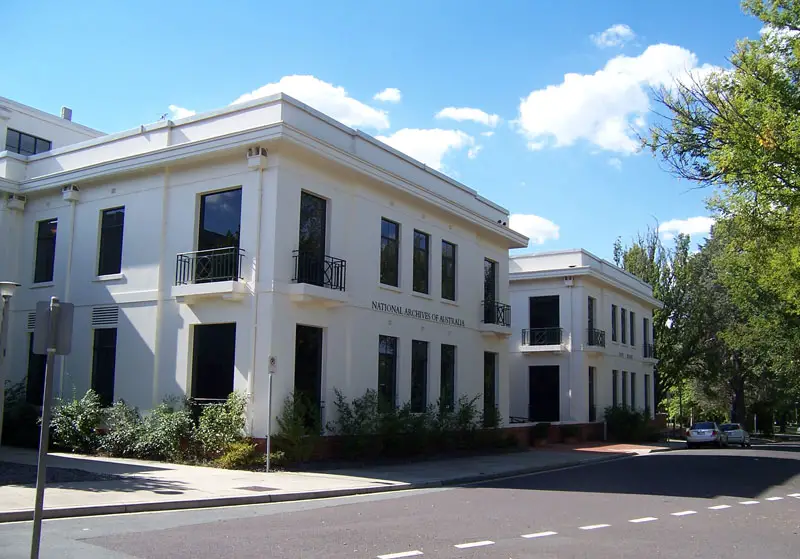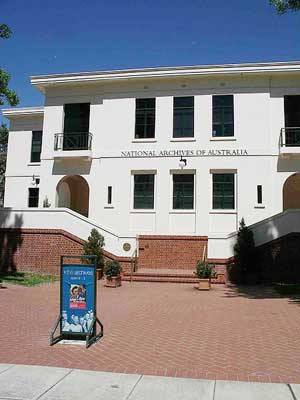
National Archives of Australia
The former Secretariat buildings, now home to the The National Archives of Australia, are the siblings of Old Parliament House. They are some of Canberra’s earliest buildings, having been completed in 1925 (the East Block) and 1927 (the West Block). They too are the work of John Smith Murdoch and share the same architectural vocabulary and use of materials. Canberra’s original post office was situated in the East Block.
The foundation stone for a National Archives was laid by Edward, Prince of Wales in Canberra in 1920 but no building was constructed after the ceremony. The Federal Parliamentary Library (later the National Library of Australia) was responsible for collecting Commonwealth Government records after World War I.
Dr Theodore Schellenberg, Director of Archival Management at the National Archives in Washington, D.C., visited Australia in 1954 on a Fulbright Scholarship and advocated the separation of Australia’s national archives from the National Library.[4] In March 1961 the Commonwealth Archives Office was formally separated from the National Library of Australia with offices spread across several Canberra suburbs, including in Nissen huts. The organisation was renamed the Australian Archives in 1975.
The Archives Act 1983 gave legislative protection for Commonwealth archives for the first time and gave the Australian Archives a legislative mandate to preserve government records. The agency was renamed the National Archives of Australia in February 1998 and became an Executive Agency of the Department of Communications, Information Technology and the Arts on 28 February 2001.[5] On 12 December 2011, it was transferred to the Department of Regional Australia, Local Government, Arts and Sport. Following the department’s abolishment in September 2013, the National Archives were transferred to the Attorney-General’s Department.
The National Archives of Australia is a body established by the Government of Australia for the purpose of preserving Commonwealth Government records. In addition to caring for its collection, the National Archives develops and tour exhibitions, publishes books and guides to the collection and delivers educational programs. It also advises other government departments and agencies on records management.
The National Archives’ collection covers public records pertaining to Federation, Governors-General, Prime Ministers, Cabinet and Ministers and most of the activities with which the government has been involved. The Archives’ repositories are “closed access” so the public cannot browse its 300,000m of shelves, but items can be requested for viewing in the reading rooms or copies made. Most records over 30 years old are released for public access, while a small proportion are released with some exempt information deleted. Exempt information includes documents relating to defence and security (such as the design and construction of weapons and records of Australian intelligence agencies) and private information (including medical records and raw census data). Cabinet notebooks are released after 50 years. Access to items of cultural sensitivity to Indigenous Australians may also be restricted.
Several collections, including all Australian military service records from the Second Boer War to the Vietnam War, have been made available online and are popular with researchers. On 6 November 2002 the Archives placed World War II service records online. Migrant selection documents and naturalisation papers more than 30 years old were made available in 2005.[7] On 11 April 2007 the Archives placed 376,000 World War I service records online. Digitising of files is an ongoing process, and new images are being added to the web site on a regular basis. The public can also request particular files to be digitised, for a fee.
1925-27 – National Archives of Australia, Queen Victoria Terrace, Parkes, ACT.
Website >>







